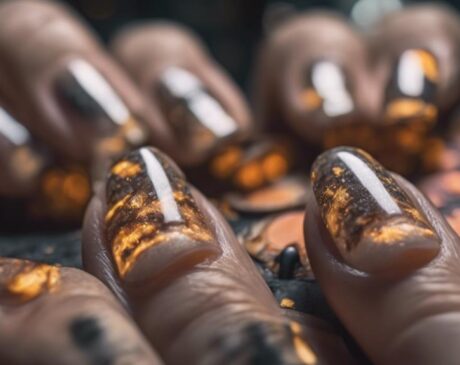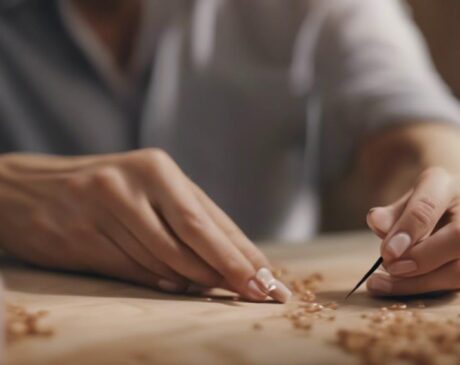What Is Nail Bed?
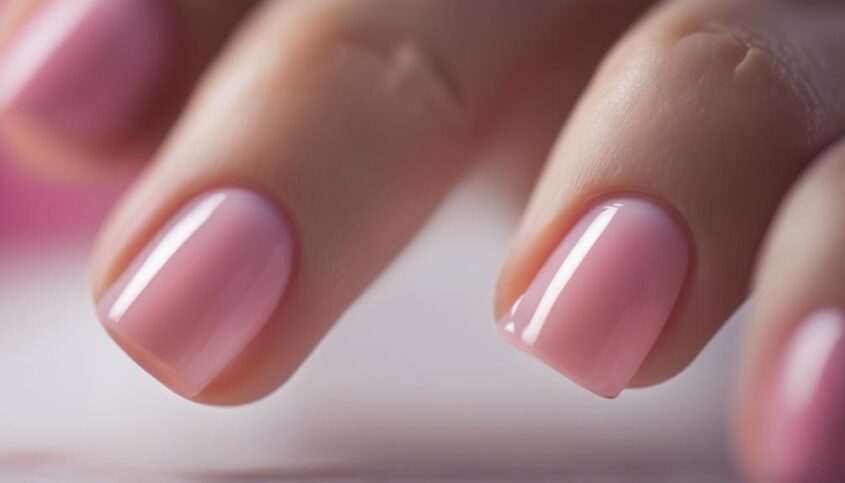
The nail bed is a fundamental part of the nail structure, providing essential support and nourishment to the nail plate. It consists of epithelial cells that extend beneath the nail plate, rich in blood vessels that supply vital nutrients to the nail matrix, and contains melanocytes for nail color. This structure is responsible for producing the nail plate, ensuring blood supply for nourishment, sensory perception, and firmly attaching the nail to the fingertip. Understanding the nail bed's role is crucial for maintaining healthy nails with a strong foundation and appearance. Further exploration can offer insights into maintaining optimal nail bed health.
Key Takeaways
- Supports and nourishes the nail plate.
- Composed of epithelial cells beneath the nail plate.
- Rich in blood vessels for nutrient supply.
- Contains melanocytes for nail color.
- Anchors nail plate, providing stability and protection.
Anatomy of the Nail Bed
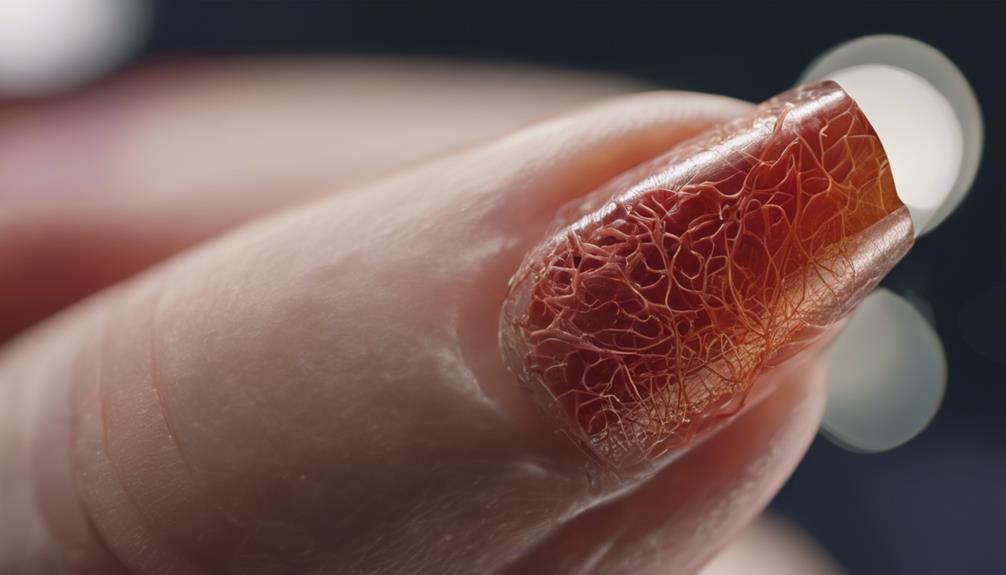
Within the structure of the fingertip, the nail bed serves as a crucial component that supports and nourishes the nail plate. The nail bed is a specialized structure composed of a layer of epithelial cells that extend beneath the nail plate. It plays a vital role in the overall health and appearance of the nails. The nail bed is rich in blood vessels, which provide nutrients and oxygen to the nail matrix, the area where new nail cells are formed. Additionally, the nail bed contains melanocytes, cells that produce melanin, the pigment responsible for the color of the nails.
Anatomically, the nail bed is divided into several distinct parts, including the proximal nail fold, the nail matrix, the sterile matrix, and the hyponychium. Each of these areas plays a specific role in the growth and maintenance of the nails. Understanding the anatomy of the nail bed is essential for recognizing potential issues that may arise, such as infections, trauma, or nail disorders. By having a thorough knowledge of the nail bed's structure, healthcare professionals can better serve individuals seeking to maintain healthy nails.
Functions of the Nail Bed
The nail bed performs essential functions in supporting the growth and maintenance of healthy nails. It plays a crucial role in providing a stable foundation for the nails and aiding in their protection. Here are some key functions of the nail bed:
| Function | Description |
|---|---|
| Nail Plate Production | The nail bed is responsible for producing the nail plate, the hard part of the nail. This process helps in nail growth and maintenance. |
| Sensory Perception | The nail bed contains nerve endings that contribute to the sense of touch in the fingertips, allowing us to feel pressure and texture. |
| Blood Supply | Rich blood supply to the nail bed ensures adequate nourishment and oxygen delivery to the nail matrix for healthy nail growth. |
| Attachment | The nail bed firmly attaches the nail plate to the fingertip, providing stability and protection to the underlying tissues. |
Understanding these functions highlights the importance of caring for the nail bed to maintain overall nail health and function.
Importance of Nail Bed Health
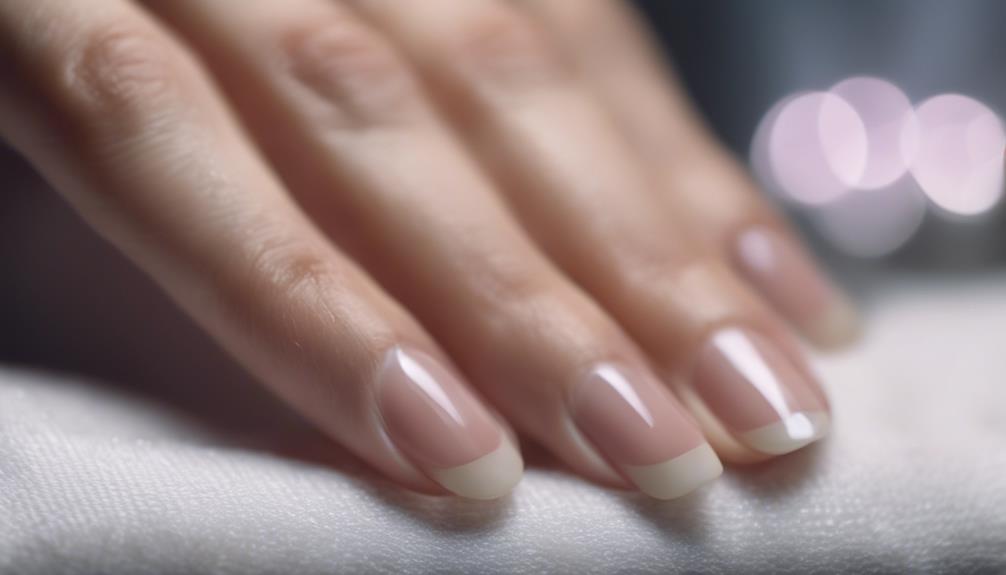
Ensuring the health of the nail bed is crucial for overall nail wellness. The nail bed plays a vital role in the growth and maintenance of nails, making it essential to keep it in good condition. Recognizing signs of nail bed issues early on can help prevent potential complications and maintain healthy nails.
Nail Bed Function
Playing a crucial role in overall nail health, the nail bed's function is essential for maintaining strong and vibrant nails. The nail bed is a vital part of the nail unit, supplying nutrients and moisture to the nail matrix, which is responsible for nail growth. It also helps anchor the nail firmly in place, providing support and protection to the delicate tissues underneath. By nourishing the nail plate and promoting proper circulation, the nail bed contributes to the appearance and strength of the nails. Ensuring the health of the nail bed is crucial for preventing issues like brittleness, discoloration, and deformities in the nails. Proper care and attention to the nail bed can lead to healthier, more beautiful nails.
Maintaining Nail Bed
Promoting optimal nail bed health is essential for fostering strong and resilient nails. To maintain the health of your nail beds, consider the following:
- Keep Hydrated: Drink an adequate amount of water daily to prevent dehydration, which can lead to brittle nails.
- Healthy Diet: Consume foods rich in biotin, vitamins, and minerals to support nail strength and growth.
- Proper Nail Care: Avoid harsh chemicals, moisturize your nails and cuticles regularly, and protect your nails from trauma.
Signs of Nail Bed Issues
To recognize potential nail bed issues and understand the importance of nail bed health, it is crucial to be attentive to certain signs that may indicate underlying problems. Changes in the color of the nail bed, such as a bluish or pale hue, could signal issues with circulation or oxygen levels. Swelling, redness, or tenderness around the nail bed may indicate inflammation or infection. Brittle or easily broken nails could be a sign of nutrient deficiencies or fungal infections affecting the nail bed. Additionally, changes in the shape or texture of the nails, such as thickening or indentations, might suggest underlying health issues. Monitoring these signs can help in early detection and prompt treatment of nail bed problems, promoting overall nail health and well-being.
Common Nail Bed Disorders
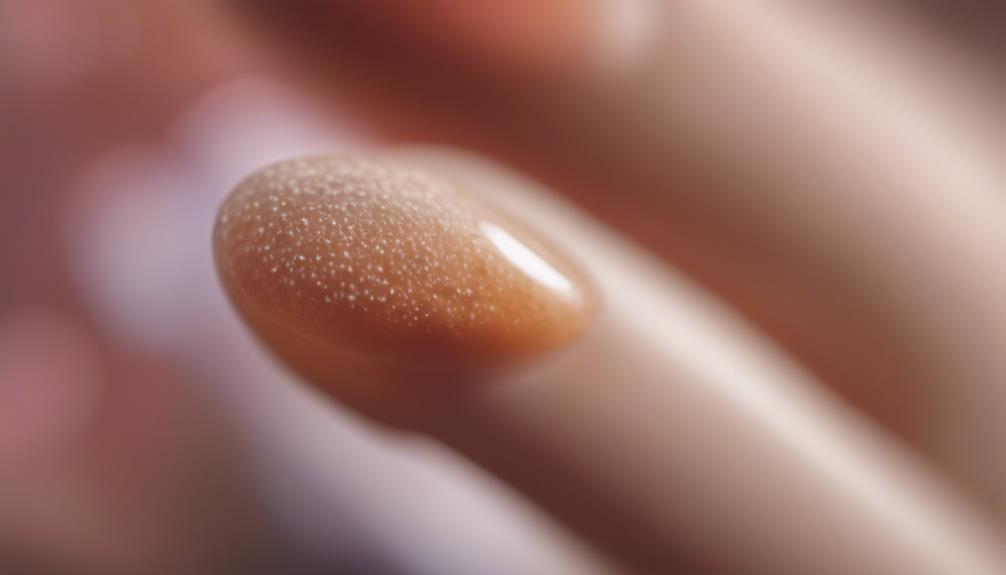
Common Nail Bed Disorders encompass a range of issues that can affect the health and appearance of the nails. Nail Bed Infections, caused by bacteria or fungi, can lead to pain, swelling, and discoloration of the nail. Nail Bed Trauma, such as injuries from accidents or repetitive stress, can result in deformities or even permanent damage to the nail bed.
Nail Bed Infections
Nail bed infections are a prevalent issue among individuals and can lead to various nail bed disorders. These infections can be caused by bacteria, fungi, or viruses entering through cuts or breaks in the skin around the nail. To better understand nail bed infections, consider the following:
- Symptoms: Look out for signs like redness, swelling, pain, pus, or changes in nail color.
- Treatment: Seeking medical attention promptly is crucial. Treatment may involve antibiotics, antifungal medication, or drainage of pus.
- Prevention: Proper nail care, avoiding nail biting, wearing protective gloves, and keeping nails dry and clean can help prevent infections.
Stay vigilant and prioritize nail health to avoid complications associated with nail bed infections.
Nail Bed Trauma
Nail bed trauma presents a range of common disorders that can result from various injuries or accidents affecting the delicate tissues underlying the nails. These traumas often lead to conditions such as subungual hematomas, nail avulsions, or nail bed lacerations. Subungual hematomas occur when blood collects underneath the nail due to blunt trauma, causing pain and discoloration. Nail avulsions involve the partial or complete detachment of the nail from the nail bed, often requiring medical intervention to prevent complications. Nail bed lacerations, on the other hand, are cuts or tears to the nail bed that can result in pain, bleeding, and potential infection if not properly treated. Understanding these common nail bed traumas is essential for providing prompt and effective care to individuals experiencing such injuries.
Nail Bed Care Tips
Proper care of the nail beds is essential for maintaining healthy nails and overall hand hygiene. By following simple nail bed care tips, you can prevent infections, promote nail growth, and improve the appearance of your hands. Here are three key tips for maintaining healthy nail beds:
- Keep your nails clean: Regularly wash your hands with soap and water to remove dirt and bacteria that can accumulate around the nail bed. Use a soft nail brush to gently clean under your nails and prevent the buildup of debris.
- Moisturize regularly: Dry and brittle nails are more prone to breakage and infection. Apply a moisturizing hand cream or nail oil to keep your nail beds hydrated and prevent them from becoming dry and cracked.
- Avoid harsh chemicals: Limit your exposure to harsh chemicals like acetone and bleach, as they can weaken the nails and damage the nail bed. Wear gloves when cleaning or using chemicals to protect your nails and skin. By following these simple nail bed care tips, you can promote healthy nail growth and maintain overall hand hygiene.
Nail Bed and Overall Well-being
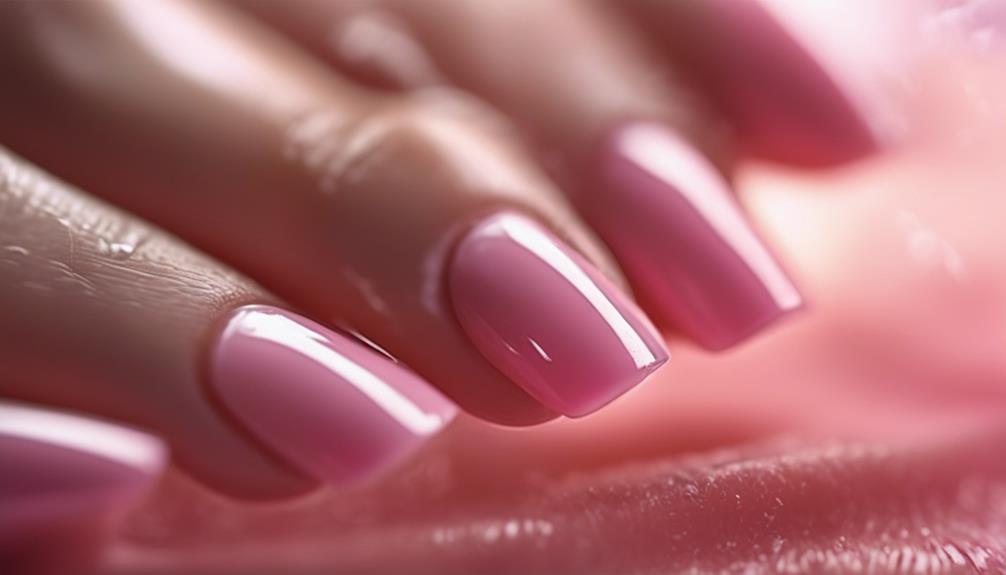
Maintaining the health of your nail beds contributes significantly to your overall well-being and hand hygiene. The condition of your nail beds can reflect underlying health issues, making their care essential. Healthy nail beds promote strong nail growth and prevent infections that could impact your daily activities. By keeping your nail beds clean and moisturized, you not only enhance the appearance of your hands but also reduce the risk of fungal or bacterial infections.
Regularly trimming your nails and pushing back your cuticles gently can help maintain the health of your nail beds. Avoiding harsh chemicals and using gloves when handling cleaning products or chemicals also plays a crucial role in protecting your nail beds. Furthermore, a balanced diet rich in vitamins and minerals supports nail health from the inside out.
Frequently Asked Questions
Can Nail Bed Disorders Be a Sign of Underlying Health Issues?
Nail bed disorders can indeed signal underlying health issues. Changes in nail color, texture, or shape may indicate various health conditions. Consulting a healthcare professional for proper diagnosis and treatment is essential for addressing both nail and potential systemic health concerns.
Are There Specific Nail Bed Care Tips for Children?
When it comes to children's nail bed care, gentle trimming, moisturizing, and protection from trauma are key. Encouraging healthy habits like keeping nails clean and dry can help prevent infections and promote overall nail health.
How Does Nail Bed Health Impact Nail Growth?
Maintaining optimal nail bed health is crucial for promoting strong and healthy nail growth. A well-nourished and hydrated nail bed provides a supportive environment for new nail cells to develop, leading to improved overall nail growth and appearance.
Can Emotional Stress Affect the Nail Bed?
Emotional stress can indeed affect the nail bed. It can disrupt the normal growth cycle of nails, leading to brittleness, ridges, or discoloration. Managing stress through relaxation techniques and self-care practices can help maintain healthy nail beds.
Are There Natural Remedies for Nail Bed Disorders?
Natural remedies for nail bed disorders can include proper nail care, maintaining a balanced diet rich in vitamins and minerals, keeping the nails clean and dry, using essential oils, and avoiding harsh chemicals. Consult a healthcare professional for specific advice.


